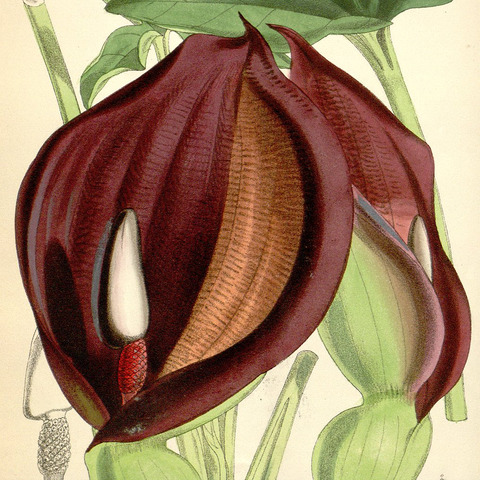An erect lily like herb. It grows 30 cm high. It has a creeping underground stem or rhizome that is 1 cm long by 2-3 cm wide. There are 1 to 3 arrow shaped leaflets on long leaf stalks. The central lobe is 20 cm by 12 cm and the side lobes are 12 cm by 1-6 cm. The flowers are large. They are deep red-brown and almost black. They are made up of small flowers in a spike is the axils of the leaves. This is in a dark purple to brown spathe. This is green on the outside. The tubers have yellow flesh. The flower has an unpleasant smell which attracts blowflies for pollination. The plant dies back to a tuber each year. The fruit are red berries about 1 cm across.

